 |
AGA mod. 3314 - Sweeden
- 1963 |
 |
|
|
Italiano
|
||
|
The AGA 3314 was a portable superheterodyne receiver for Long Wave, Medium Wave and FM. The circuit used 9 germanium transistors: AF102, OC615, AF105, AF105, AF105, AC122, AC122, AC117, AC117 and 4 germanium diodes: OA160, 2 x OA172, OA174. For FM reception the radio was equipped with a whip antenna while for OM and OL the antenna was wound around a long ferrite core. The radio also had a car radio-type external antenna socket for use in the car. The cabinet was made of masonite with wooden reinforcements, was covered with thick leather and had the back that closed with three snaps. The cabinet was equipped with a carrying handle, on the right side there were two separate tuning knobs, the upper one was for OM and OL while the one below was for FM. On the left side were the volume and tone controls. In the upper part, under the handle, there was the push-button panel with the power button, the three range switches (FM, MV, LV) and the internal or external antenna selector. The power was supplied by a large 9 V battery (Tudor 915 type) which allowed a good autonomy. The dimensions were: (W,H,D) 11.02x7.87x3.74 in and the weight was 4lb 13.6oz without batteries. © IK3HIA, 2007 |
|||
|
Click on the images
to enlarge
|
|||
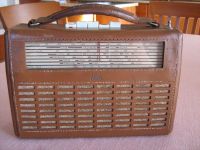 |
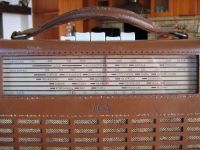 |
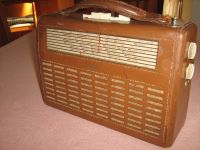 |
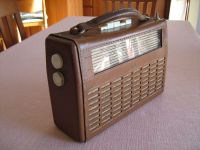 |
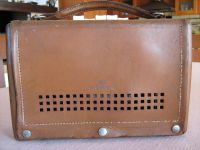 |
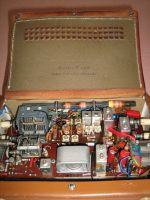 |
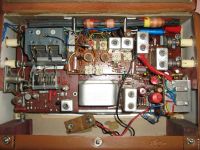 |
 |
|
La AGA 3314 era un ricevitore portatile supereterodina per Onde Lunghe, Onde Medie e FM. Il circuito utilizzava nove transistor al germanio: AF102, OC615, AF105, AF105, AF105, AC122, AC122, AC117, AC117 e quattro diodi al germanio: OA160, 2 x OA172, OA174. Per la ricezione della FM la radio era dotata di un'antenna a stilo mentre per OM e OL l'antenna era avvolta su un lungo nucleo di ferrite. La radio inoltre disponeva di una presa d'antenna esterna tipo autoradio per poterla utilizzare in macchina. Il mobiletto era in masonite con rinforzi in legno, era ricoperto con spessa pelle e aaveva la parte posteriore che si chiudeva con tre bottoni a pressione. Il mobiletto era dotato di maniglia per il trasporto, sul fianco destro c'erano due manopole di sintonia separate, quella pił in alto era per OM e OL mentre quella sotto era per la FM. Sul lato sinistro c'erano i controlli di volume e di tono. Nella parte superiore, sotto la maniglia, c'era la pulsantiera con il tasto di accensione, i tre del cambio gamma (FM, MV, LV) e il selettore antenna interna o esterna. L'alimentazione era fornita da una grossa batteria da 9 V (tipo Tudor 915) che permetteva una discreta autononia. Le dimensioni erano: 28x20x9.5 cm e il peso e' 2.2 Kg senza batterie. © IK3HIA, 2007 |
|||
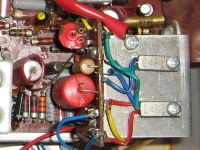 |
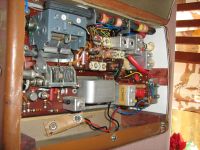 |
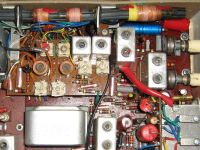 |
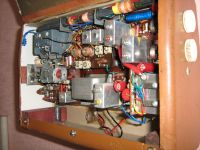 |
 |
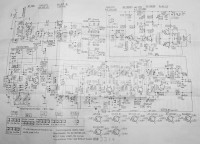 |
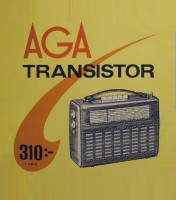 |
 |
|
Return to top of page
|
|||